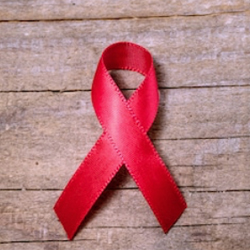New guidelines for feeding infants born to people with HIV do not outright ban breastfeeding, as they have in the past. Instead, the new U.S. perinatal HIV clinical guidelines suggest that parents make this decision after weighing the pros and cons with their physicians.
“These changes could be described as historic or even seismic, given decades of prohibition against breastfeeding among mothers living with HIV in the U.S.,” said Elaine Abrams, MD, a professor of epidemiology and pediatrics at Columbia University, in New York City. Dr. Abrams has worked in perinatal and pediatric HIV prevention and treatment for more than 30 years and was among the guideline authors (https://clinicalinfo.hiv.gov/en/ guidelines/ perinatal/ whats-new).
The new recommendations have been a long time coming, agreed Judy Levison, MD, MPH, AAHIVS, a professor in the Department of Obstetrics and Gynecology at Baylor College of Medicine, in Houston.
People with HIV whose viral load is consistently suppressed may breastfeed, according to the new guidelines, but it is important to understand the risks. Without antiretroviral therapy (ART) suppression, the risk for an infant acquiring HIV is 15% to 20% over the course of breastfeeding.
If the parent achieves and maintains viral suppression with ART during pregnancy and postpartum, the risk for acquiring HIV through breastfeeding is less than 1% over two years, according to Dr. Levison—“but it is not zero.”
Therefore counseling is crucial, she said.
“So how do we counsel now? First of all, for people with HIV who are not on ART and/or do not have a suppressed viral load at delivery, replacement feeding with formula or banked pasteurized donor human milk is recommended to eliminate the risk of HIV transmission,” Dr. Levison said.
“However, individuals with HIV on ART with a consistently suppressed viral load at a minimum during the third trimester and at the time of delivery should be counseled about the options of formula feeding bank, donor milk or breastfeeding.”
They need to know the risks and benefits so that they can make an informed decision, she said, as well as when breastfeeding should be temporarily stopped or modified, if that is what they choose to do and what the options are if they do need to modify their breastfeeding schedule.
“In the case of a detectable viral load, breastfeeding should be temporarily stopped, and options include giving previously stored breast milk, pumping and flash heating, providing replacement feeding, or cessation of breastfeeding,” she said. The viral load test should be retaken and the situation reassessed.
“If the repeat viral load is detectable, the panel’s advice is immediate cessation of breastfeeding. This guidance is more directive than the counseling for individuals on suppressive ART,” Dr. Levison explained.
Breastfeeding is a human right (Front Pediatr 2020 May 27. https://doi.org/10.3389/ fped.2020.00248). Yet, since the 1980s, breastfeeding by people with HIV was strongly discouraged to prevent postnatal transmission, Dr. Levison said at CROI 2023, in Seattle.
In 2015, while still recommending against breastfeeding, the guidelines recognized that women who do not breastfeed “may face social, familial and personal pressures to breastfeed despite this recommendation and that it is important to begin addressing possible barriers to formula feeding during the antenatal period,” Dr. Levison said, calling that recognition a tiny step forward.
In 2018, “an entire section on infant feeding was added to the perinatal guidelines but the language remained fairly negative,” Dr. Levison told Infectious Disease Special Edition. “Women who have questions about breastfeeding or who desire to breastfeed should receive patient-centered, evidence-based counseling. When women with HIV choose to breastfeed, despite intensive counseling, they should be counseled using harm reduction measures to minimize the risk of HIV transmission to their infant.”
The pressure not to breastfeed was zealous, and some healthcare providers even called child protective services on women who chose to breastfeed, she said, and the new guidelines strongly oppose such actions.
“Engaging child protective services or similar agencies is not an appropriate response to the infant feeding choices of the individual with HIV,” Dr. Levison said, which brought applause from the CROI audience.
“Many pregnant people with HIV have reported that after expressing their interest or intention to breastfeed, their providers threatened to report them to child protective services or actually did so. Such engagements can be extremely harmful to families, can exacerbate the stigma and discrimination experienced among people with HIV, and are disproportionately applied to minoritized individuals, including Black, Indigenous and other people of color.”
For most infants, the 2023 guidelines now “support parental choice through shared decision making,” rather than making a specific recommendation about how the infant should be fed, Dr. Levison said.
Just as all pregnant people do, those with HIV have to weigh the benefits and risks before making a decision, and the new guidelines empower them to do that. In addition to the bond they develop, there are health benefits for both infant and mother in breastfeeding. Breastfeeding has been associated with a reduced risk for developing asthma, obesity, type 1 diabetes, respiratory disease, otitis media, sudden infant death syndrome, gastrointestinal infections and necrotizing enterocolitis. Similarly, breastfeeding has been associated with reduced maternal risks for hypertension, type 2 diabetes, and breast and ovarian cancers.
“We considered equity issues,” Dr. Levison said of the panel’s recommendation. “Black women are disproportionately affected by HIV. People of color experience a greater burden of many health conditions that may be alleviated by breastfeeding, and cultural considerations, environmental, social, familial and personal pressures to consider breastfeeding and the fear that not breastfeeding would lead to disclosure of their HIV status [were also considered in the new recommendations].”
Shades of Gray
There are still some gray areas with no consensus on antiretroviral prophylaxis for infants of individuals with sustained viral suppression who are breastfed. Most panel members agree on two weeks of infant zidovudine. The previous recommendation was four weeks. Other panel members wanted to extend that to six weeks instead of reducing the length of therapy.
Some panel members wanted to use the World Health Organization recommendations for breastfeeding infants at low risk for HIV acquisition in resource-limited countries: infant nevirapine for six weeks (https://www.who.int/publications/ i/ item/ 9789241549707). And some wanted to continue nevirapine throughout breastfeeding and for one month after breastfeeding.
Unfortunately, much of the guideline is based on expert opinion because the data to support recommendations are limited.
Studies have not systematically evaluated the HIV transmission risk through breastfeeding when ART was begun early in or before pregnancy and continued throughout breastfeeding, according to one study (AIDS Patient Care STDS 2023;37[2]:84-94). And there are no data to base decisions about the frequency of viral load testing for the breastfeeding parent.
Yet, the interest in breastfeeding has increased. More than 25% of calls to a perinatal hotline were related to breastfeeding in 2022; in 2014, fewer than 5% of perinatal calls were associated with breastfeeding, according to the University of California, San Francisco.
“And providers in the USA have had to struggle to navigate support in the absence of more guidance,” Dr. Levison said. UCSF surveyed providers whose patients want to breastfeed, and it showed the tension between respecting patient autonomy and paternalism.
Nicole H. Tobin, MD, an associate adjunct professor of pediatrics at University of California, Los Angeles, suggested that providers and mothers take advantage of lactation consultants.
The process of developing the new recommendations, which occurred during the COVID-19 pandemic was thoughtful, yet sometimes stressful. It was “informed by decades of research, as well as new collaborations and countless meetings—Zoom meetings—and conversations between the pediatric and perinatal guidelines committees. Most importantly, however, I think these new recommendations were informed and hopefully are responsive to the needs and the desires of mothers and people living with HIV,” Dr. Abrams said.
The sources reported no relevant financial disclosures.
This article is from the May 2023 print issue.






